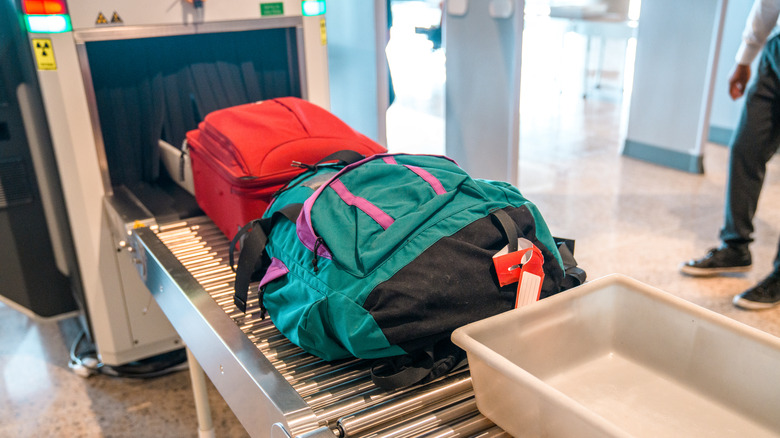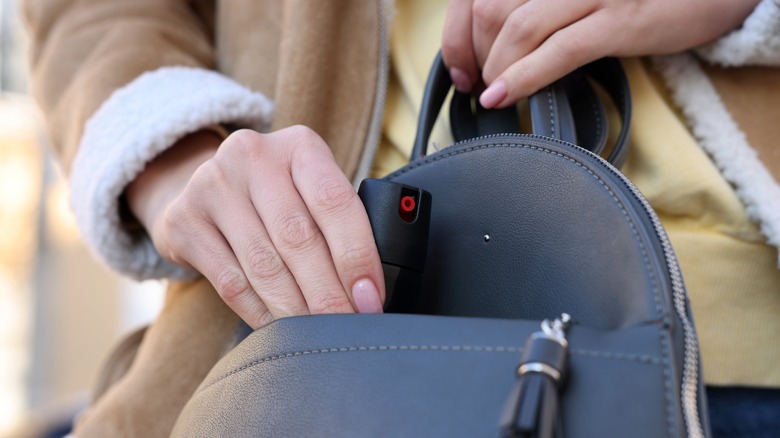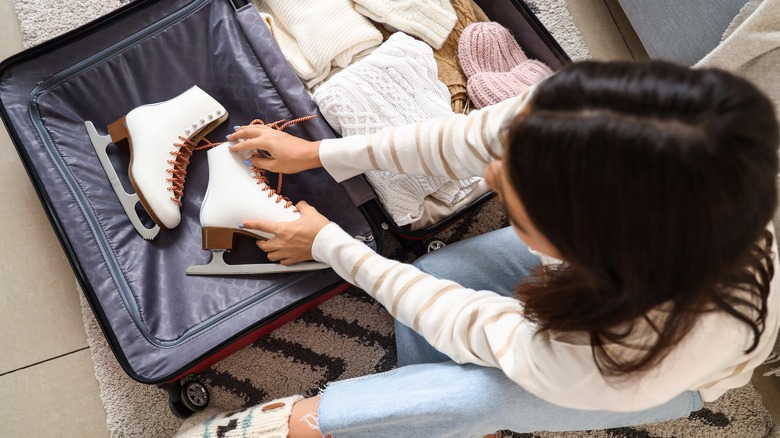TSA's Carry-On Luggage Rules You Should Know Before Heading To The Airport
Airlines have strict baggage policies, and so does the Transportation Security Administration (TSA). The United States' airport agency enforces several rules when it comes to fliers' luggage, which you must keep in mind when packing for a trip. Though rules apply to all types of baggage, carry-on bags tend to undergo more scrutiny, considering that plane cabins must be kept secure to avoid an in-flight accident or tragedy. With this in mind, some items that are allowed in checked bags are prohibited when it comes to carry-ons.
One common example is liquid goods. TSA's 3-1-1 liquids rule states that all carry-on liquids must fit in 3.4-ounce containers and be stored in a single quart-size sealable plastic bag. This means that full-sized bottles of shampoo and your average can of soda, for example, won't be allowed through security. The rules even apply to some unexpected items, such as peanut butter and gel candles. Note, however, that some important travel items are exempt from TSA's liquid rules, including milk for babies and liquid medications. When in doubt, consult the TSA website, or stash your liquids in a checked bag to be safe.
If it could be a weapon, TSA will likely confiscate it
For obvious reasons, weapons are generally prohibited in carry-on luggage and, depending on the item, should be left at home or placed in a checked bag. This includes (but isn't limited to) firearms and ammunition, as well as anything that may resemble a firearm. To put it simply, don't pack a toy gun in your carry-on bag if you want to avoid getting flagged by TSA.
Many sharp objects are also banned from carry-on luggage, as they could pose a danger when used on planes. Most knives, box cutters, corkscrews with blades, and other pointy or razor-like items should be limited to checked luggage to comply with TSA's rules. Similarly, self-defense sprays are allowed in checked bags but not in carry-ons. However, certain harmful sprays, such as bear spray, aren't allowed in either type of luggage, so be sure to pack carefully.
A range of flammables are also prohibited in plane cabins to reduce the risk of a fire or explosion. Some are a no-brainer, such as dynamite, while others are less obvious. Bleach, certain paints, and Christmas crackers are a few belongings that will be confiscated if you attempt to bring them through security.
Your sports and camping gear may be prohibited on the plane
If you're planning to go camping or stay active during your trip, you might be disappointed to learn that many types of sporting goods aren't allowed to be brought on flights as carry-on items. Besides airline restrictions, TSA has rules in place for outdoor gear. For instance, baseball bats, golf clubs, canoe paddles, and hiking poles are a no-go in TSA's book. Campers should watch out for tent stakes and cast iron cookware, both of which are also banned from carry-on luggage.
With that said, some athletic gear is A-OK in plane cabins, per TSA's rules. Most balls and even non-electric bicycles are allowed, as long as your airline permits them. Fishing poles (without sharp hooks), longboards, tennis rackets, skates, and rope are also allowed as carry-on items. For any oversized gear, it's generally best to disassemble what you can to ensure they fit in the plane's overhead bins and can be quickly screened in the airport security machines.


